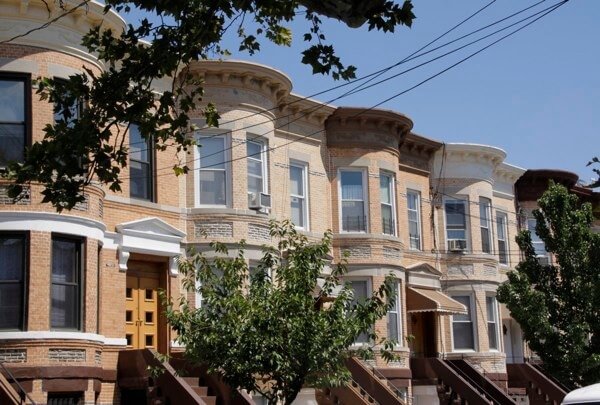By Mark Hallum
The beige brick row houses of central Ridgewood are now officially recognized as an historic district by the Landmark Preservation Commission, a designation which will maintain the character of the neighborhood for generations to come. Many of the residents in the community have roots as old as the distinct buildings themselves, and with the changing character of the neighborhood were enthusiastic with the new status of their area.
City Councilwoman Elizabeth Crowley (D-Middle Village) unveiled the Central Ridgewood Historic District sign on the corner of 70th Avenue and Fresh Pond Road last Friday with LPC Chairwoman Meenakshi Srinivasan, LPC Foundation Chairwwoman Christina Davis and Ridgewood Civic Association President Paul Kerzner.
Kerzner has been advocating for historic designations in Ridgewood since 1983 and remains committed to keep adding the preservation districts.
“There are two [historic districts] in the city of New York that are larger than Ridgewood,” Kerzner said. “And those two neighborhoods are Greenwich Village… and the largest historic district in the city is Sunset Park, believe it or not. They have Ridgewood beat by about 15 buildings. That will not stand.”
John Frey, or Jack as he is known, spend the first 26 years of his life on 70th Avenue, west of Fresh Pond Road where the dedication ceremony took place. He now lives on Woodbine Street and has spent over 80 years in Ridgewood, apart from a summer in Los Angeles as a young man. He spoke of the staples and hangouts long gone over the years, such as meeting halls, stores and restaurants.
Community Board 5 Chairman Vincent Arcuri said his father was born in Ridgewood in 1900, prior to the construction of many of the structures in the district. According to Arcuri, he never left Ridgewood because he had no reason to. It is an attractive place with clean streets, which attracts immigrants to this day. He remarked that the new wave of transplants are coming in the form of hipsters, widely regarded as a gentrifying force.
“When people think of New York City, they think of so many different characteristics,” Crowley said. “Ridgewood really exemplified that character. It’s so important that we’re able to preserve the rich history and culture that Ridgewood has to provide.”
The majority of the structures in the neighborhood were built between 1906 and World War I, following the construction of the metro lines to the area and eastward expansion of the quickly sprawling New York City, according to the LPC.
Ridgewood quickly evolved from a rural community into an urban enclave populated mainly by German Americans who had relocated away from tenement life in immigrant communities such as the Lower East Side, Bushwick and Williamsburg.
Central Ridgewood will now enjoy the protections Ridgewood South and Ridgewood North Historic District have enjoyed since 2010.
“The buildings in this district were a significant upgrade from earlier tenements, and served as a model for affordable housing at a time when New York City’s population was growing rapidly,” Srinivasan said in a news release when the historic district was first approved in 2014. “Most remarkably, most of these lively buildings remain unchanged since their completion over 100 years ago.”
Reach reporter Mark Hallum by e-mail at mhall



































